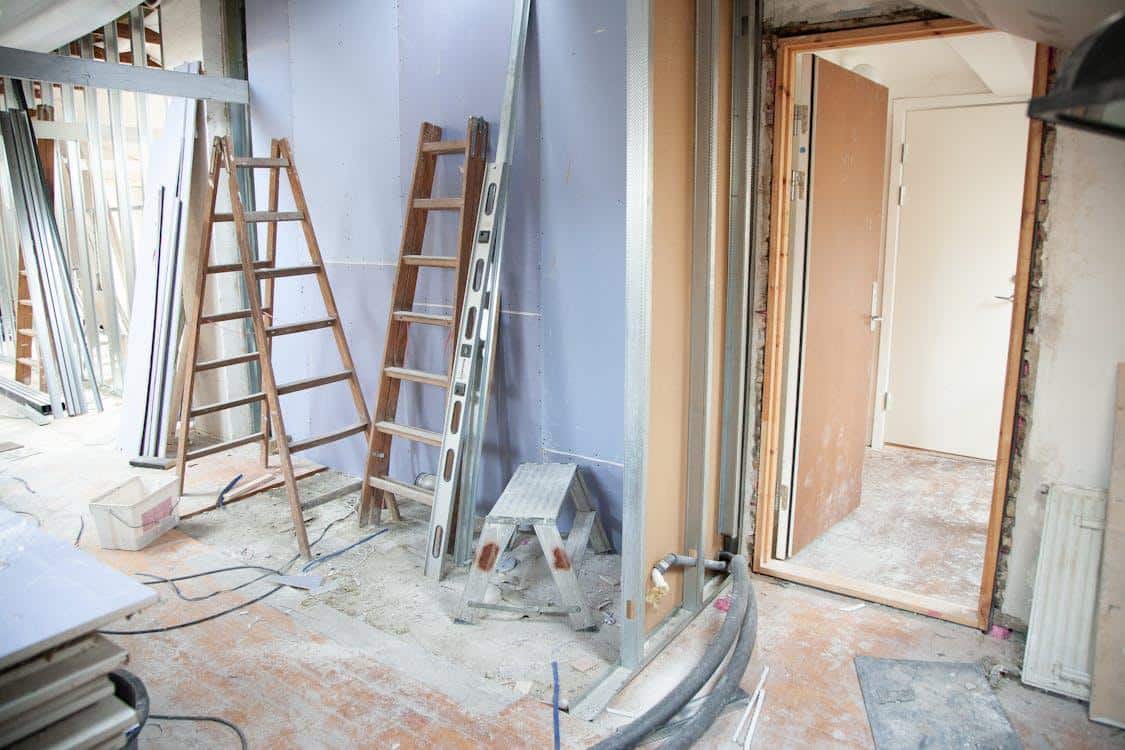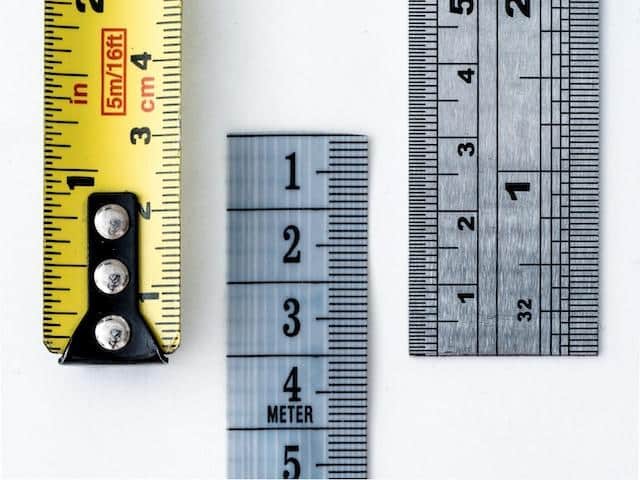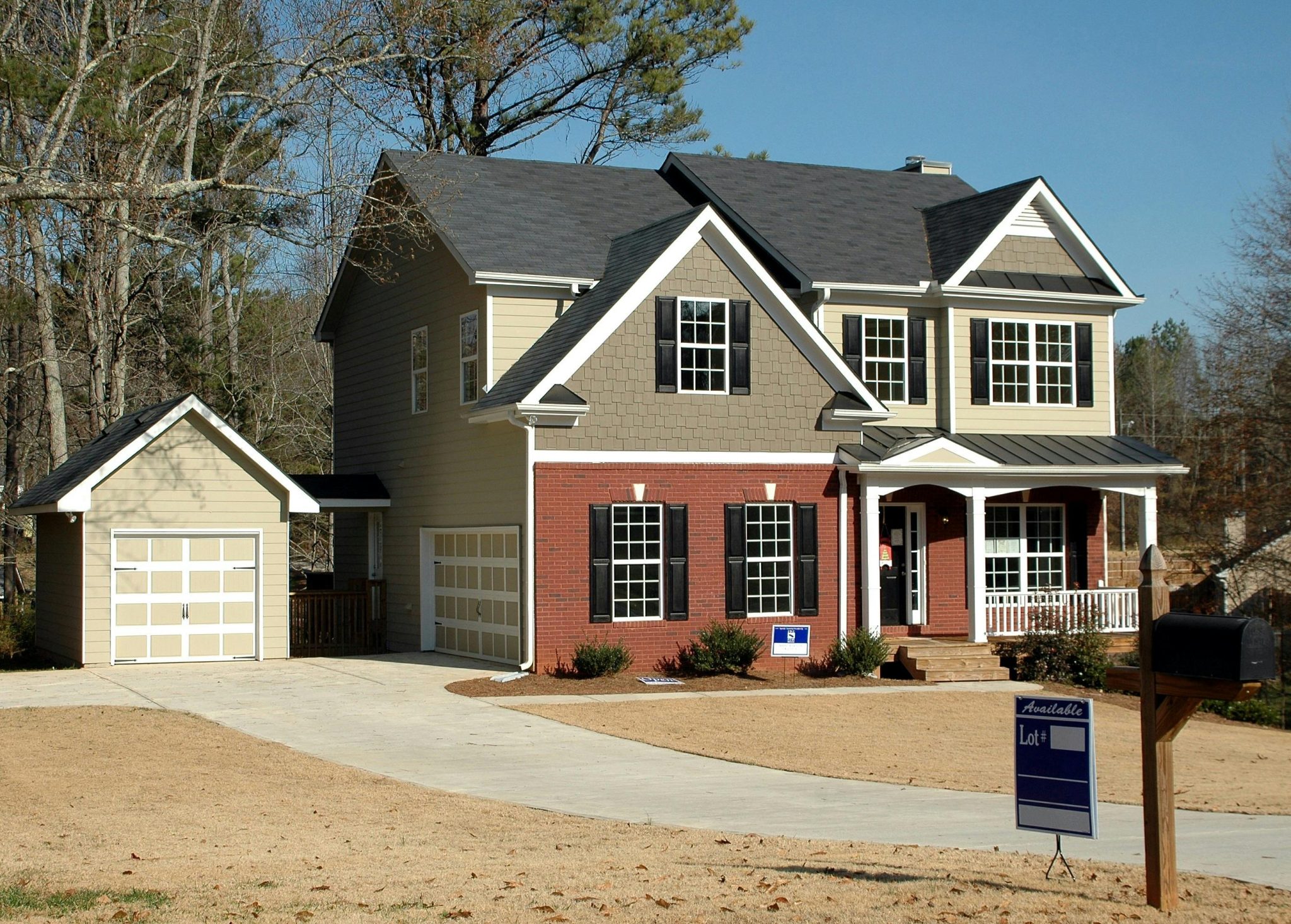Understanding Sewer Backups: 10 Causes and Solutions
Sewer backups are a homeowner’s nightmare, causing damage and potential health hazards.
Many property owners face this issue without fully understanding its causes or solutions.
This comprehensive guide will demystify sewer backups, equipping you with essential knowledge to protect your home and family.
We’ll explore ten common causes of sewer backups, from tree root intrusion to municipal system issues.
More importantly, you’ll learn practical solutions and preventive measures to keep your plumbing system flowing smoothly.
By understanding these factors, you’ll be better prepared to maintain your sewer line, recognize early warning signs, and take prompt action when needed.
Let’s jump into the world of sewer systems and empower you to safeguard your property against this messy and potentially costly problem.
Main Causes of Sewer Backups
Sewer backups can be a significant problem for homeowners, causing property damage and potential health hazards.
Understanding the main causes is crucial for prevention and maintenance.
Let’s explore the primary causes of sewer backups:
1. Blocked or Clogged Pipes
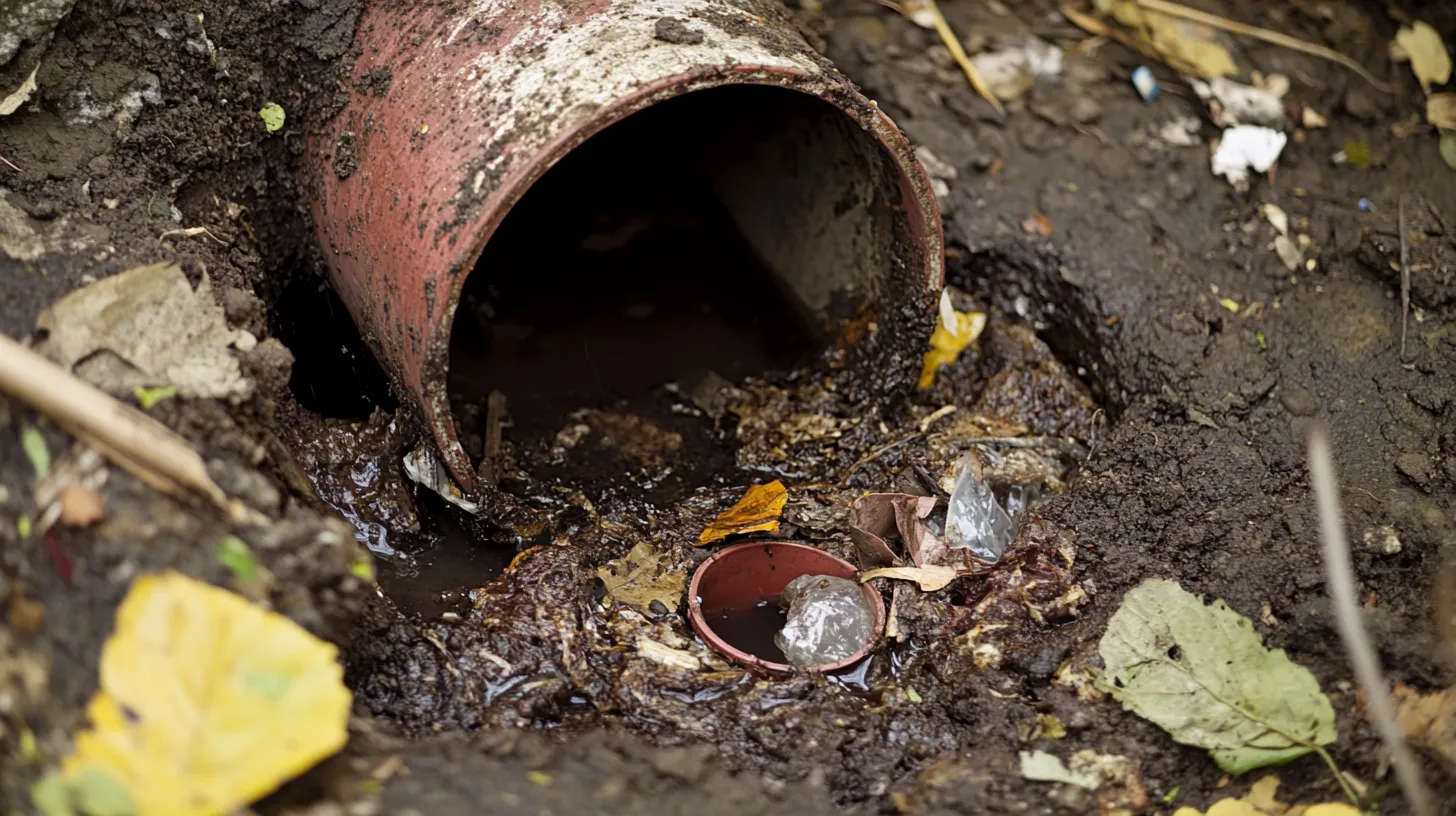
Causes
Accumulation of debris
- Hair, soap scum, and food particles build up over time in drains and pipes.
- Small objects accidentally washed down sinks or flushed down toilets.
Grease and fat deposits
- Cooking oils and fats poured down kitchen drains solidify in pipes.
- These sticky substances trap other debris, creating larger blockages.
Non-flushable items
- “Flushable” wipes, paper towels, and feminine hygiene products that don’t break down in water.
- Cotton swabs, dental floss, and other bathroom items were flushed down toilets.
Solutions
Avoid flushing inappropriate items
- Only flush human waste and toilet paper.
- Dispose of grease and oils in the trash, not down the drain.
- Use trash bins for non-flushable items in bathrooms and kitchens.
Perform regular drain cleaning
- Schedule annual professional drain cleaning services.
- Use natural cleaning methods like baking soda and vinegar monthly.
- Pour boiling water down drains weekly to help dissolve minor buildup.
Install drain screens
- Use fine mesh screens in all sinks, showers, and bathtub drains.
- Clean screens regularly to maintain their effectiveness.
Educate household members
- Create and post a chart of proper drain usage near sinks and toilets.
- Teach children about appropriate disposal habits.
Use enzyme-based cleaners
- Apply enzyme-based cleaners regularly to break down organic matter in pipes.
- These are safer for pipes and the environment than harsh chemical cleaners.
2. Tree Roots
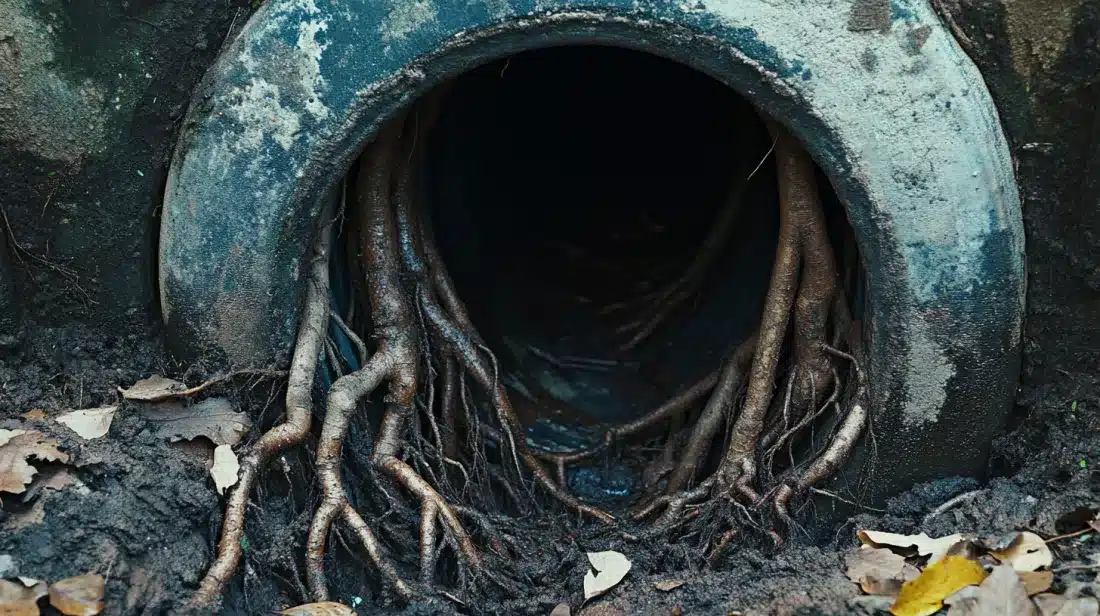
Causes
Moisture-seeking behavior
- Tree roots naturally grow towards sources of water and nutrients.
- Sewer lines provide an ideal environment with moisture and organic matter.
Pipe vulnerabilities
- Small cracks or loose joints in pipes allow initial root entry.
- Older clay or concrete pipes are particularly susceptible to root intrusion.
Expansion over time
- Once inside, roots continue to grow and expand.
- This growth can cause further pipe damage and blockages.
Seasonal changes
- During dry periods, roots may aggressively seek water sources like sewer lines.
- This can accelerate root intrusion and pipe damage.
Solutions
Use root barriers
- Install physical or chemical barriers around pipes in tree-heavy areas.
Regular inspections
- Schedule annual video inspections to detect early root intrusion.
Pipe relining
- Use trenchless techniques to seal small cracks and joints.
Pipe replacement
- Replace severely damaged pipes with root-resistant materials like PVC.
Professional root removal
- Mechanical augers or hydro-jetting are used to clear existing root intrusions.
Tree management
- Remove high-risk trees or choose species with less aggressive roots.
Regular maintenance
- Perform routine root treatments every 6-12 months in problem areas.
Proper landscaping
- Maintain safe distances between new trees and sewer lines.
Educate homeowners
- Provide information about root risks and encourage regular maintenance and prompt reporting of issues.
3. Damaged Sewer Pipes
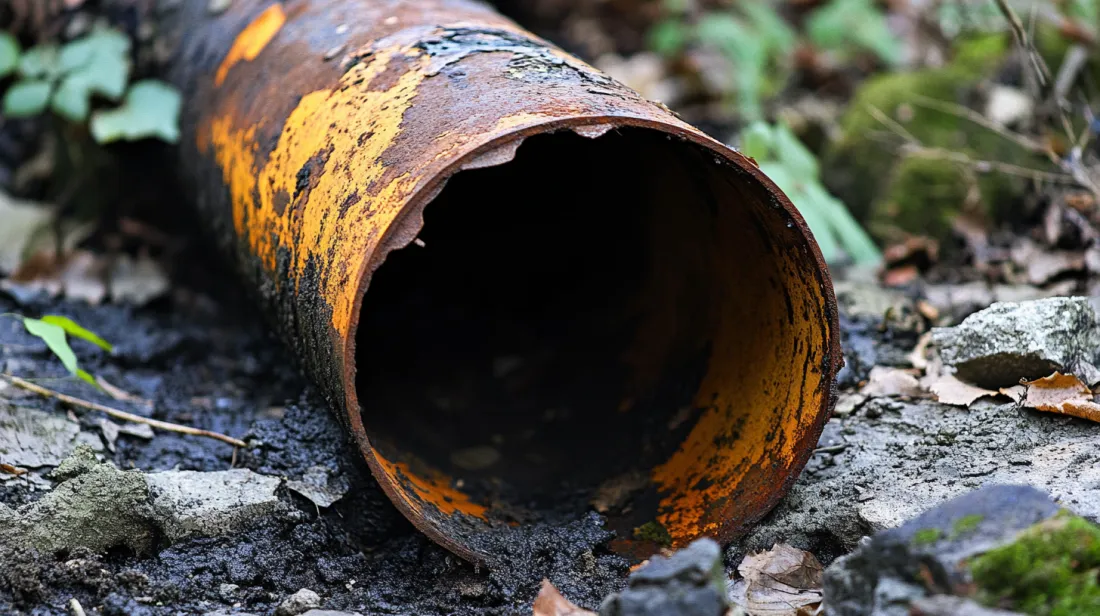
Causes
Earth movements
- Soil settling or shifting causes misalignment or cracks.
- Earthquakes or construction vibrations damage pipes.
Corrosion
- Chemical reactions deteriorate metal pipes over time.
- Older cast iron or steel pipes are most vulnerable.
Physical damage
- Heavy machinery or construction work can break pipes.
- Freeze-thaw cycles in cold climates cause cracking.
Age-related deterioration
- Natural degradation of older materials like clay or concrete.
- Loosening joints and failing seals in aging pipes.
Solutions
Regular inspections
- Schedule periodic video inspections for early damage detection.
Trenchless repair techniques
- Use pipe lining or pipe bursting for minimal surface disruption.
Pipe replacement
- Replace severely damaged pipes with durable materials like PVC.
Preventive maintenance
- Apply protective coatings and insulate pipes in cold climates.
Proper installation practices
- Use appropriate bedding and flexible joints in new installations.
4. Heavy Rainfall
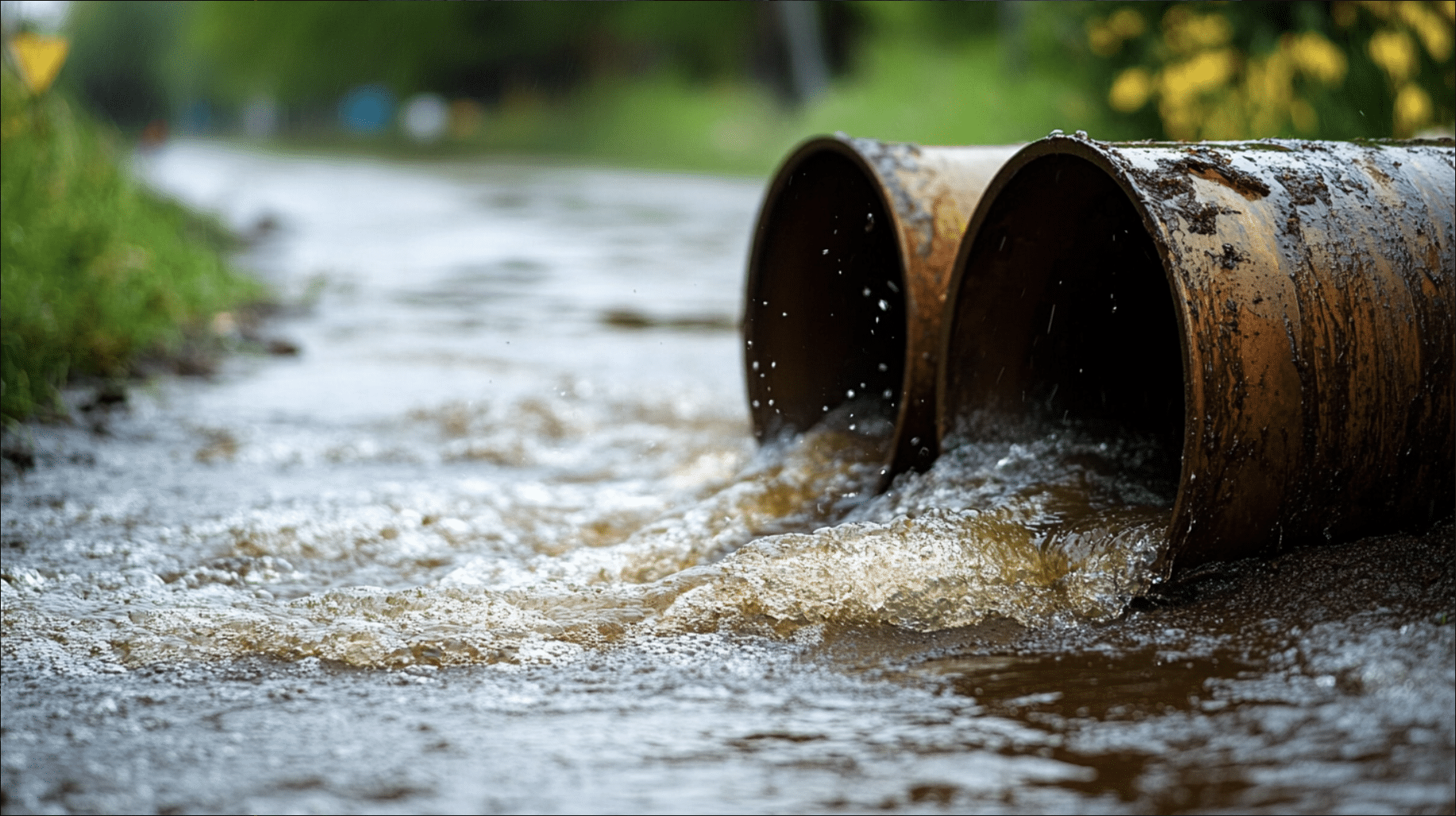
Causes
Overwhelmed public sewer systems
- Excessive rainwater enters combined sewer systems.
- Storm drains and sewers reach capacity quickly.
Infiltration and inflow
- Rainwater seeps into cracked pipes or loose joints.
- Improper connections allow stormwater into sanitary sewers.
Poor drainage
- Improperly graded yards direct water toward foundations.
- Clogged gutters and downspouts overflow near the house.
Solutions
Install backflow valves
- Prevent sewage from backing up into homes during overflows.
- Regularly maintain and test valves for proper function.
Maintain proper yard grading
- Ensure the ground slopes away from the foundation.
- Create swales or French drains to redirect water.
Disconnect illegal connections
- Remove sump pumps or downspouts connected to sanitary sewers.
- Direct stormwater to appropriate drainage systems.
Regular maintenance
- Keep gutters and downspouts clear of debris.
- Inspect and clean drainage pipes periodically.
5. Aging Sewer Systems
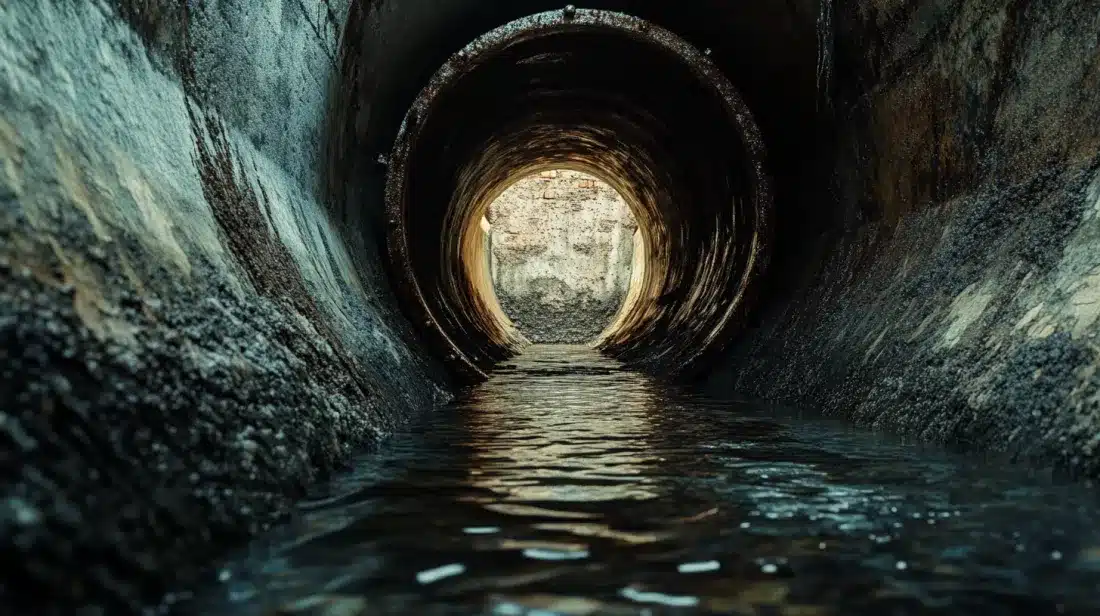
Causes
Material deterioration
- Clay and cast iron pipes break down over time.
- Joints loosen, and seals fail with age.
Corrosion
- Metal pipes corrode due to chemical reactions with soil and wastewater.
- Corrosion weakens pipe walls, leading to cracks and collapses.
Outdated design
- Older systems may not meet current capacity needs.
- Antiquated materials are more susceptible to root intrusion and blockages.
Accumulated wear
- Years of use lead to pipe erosion and sediment buildup.
- Repeated minor damages compound over time.
Solutions
Replace old pipes
- Install modern materials like PVC or HDPE.
- Use trenchless technologies for minimal surface disruption.
Regular inspections
- Schedule periodic video inspections to assess pipe condition.
- Identify and address issues before they become critical.
Preventive maintenance
- Implement routine cleaning and descaling programs.
- Apply protective coatings to extend pipe lifespan.
Gradual system upgrades:
- Develop a long-term replacement plan for aging infrastructure.
- Prioritize high-risk areas for immediate attention.
6. Municipal Sewer Problems
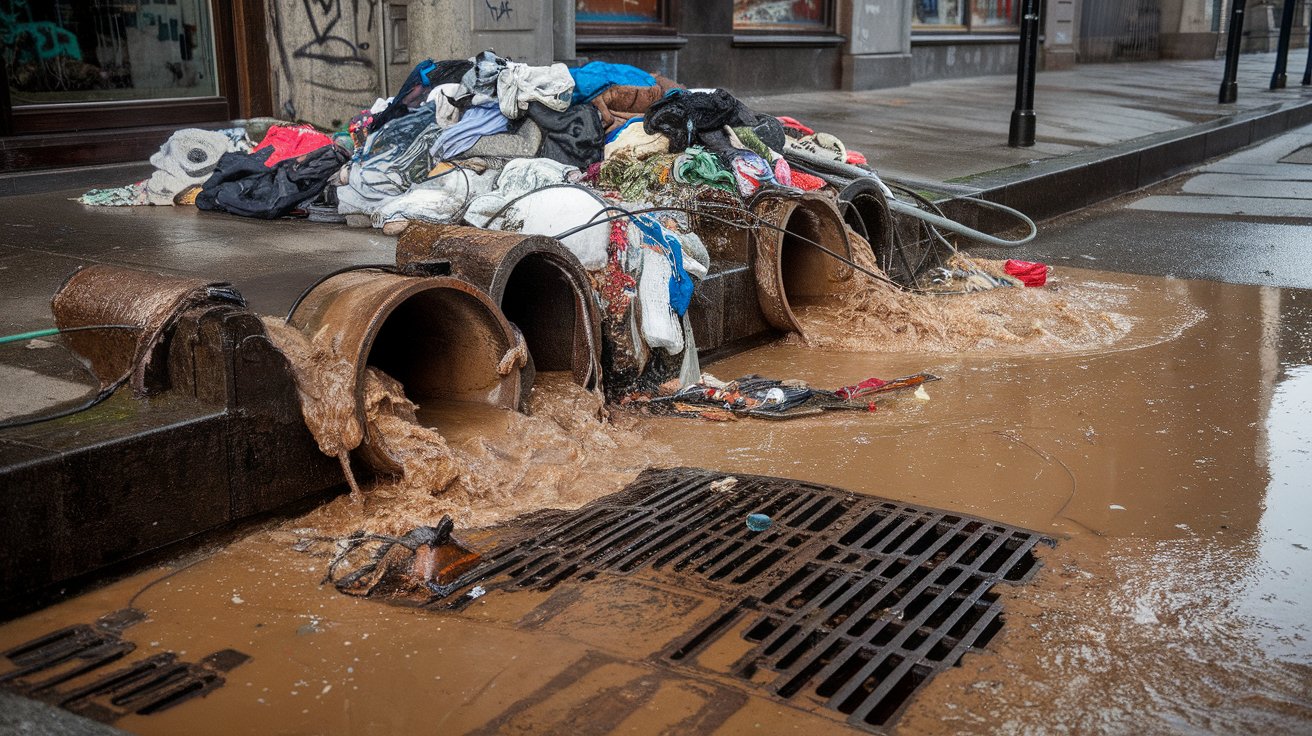
Causes
Blockages in city sewer lines
- Accumulation of debris, grease, or non-biodegradable materials.
- Tree root intrusion in main sewer pipes.
Aging infrastructure
- They are deteriorating or collapsing municipal sewer pipes.
- Outdated sewer systems unable to handle increasing demand.
Capacity issues:
- Rapid urban development overwhelming existing sewer systems.
- Combined sewer systems are unable to manage both sewage and stormwater.
Maintenance lapses
- Inadequate or delayed municipal sewer maintenance.
- Undetected damage or wear in city sewer lines.
Solutions
Contact local authorities
- Report sewer backup issues promptly to the municipal water department.
- Request information on planned upgrades or maintenance in your area.
Install a backflow preventer
- Prevent sewage from backing up into your home during municipal overflows.
- Regularly maintain and inspect the device for proper function.
Stay informed
- Subscribe to local utility notifications for updates on sewer work.
- Participate in community meetings about infrastructure improvements.
Proper home maintenance
- Ensure your private sewer line is in good condition to minimize additional stress on the municipal system.
- Avoid flushing non-biodegradable items that could contribute to municipal blockages.
7. Sewer System Overload
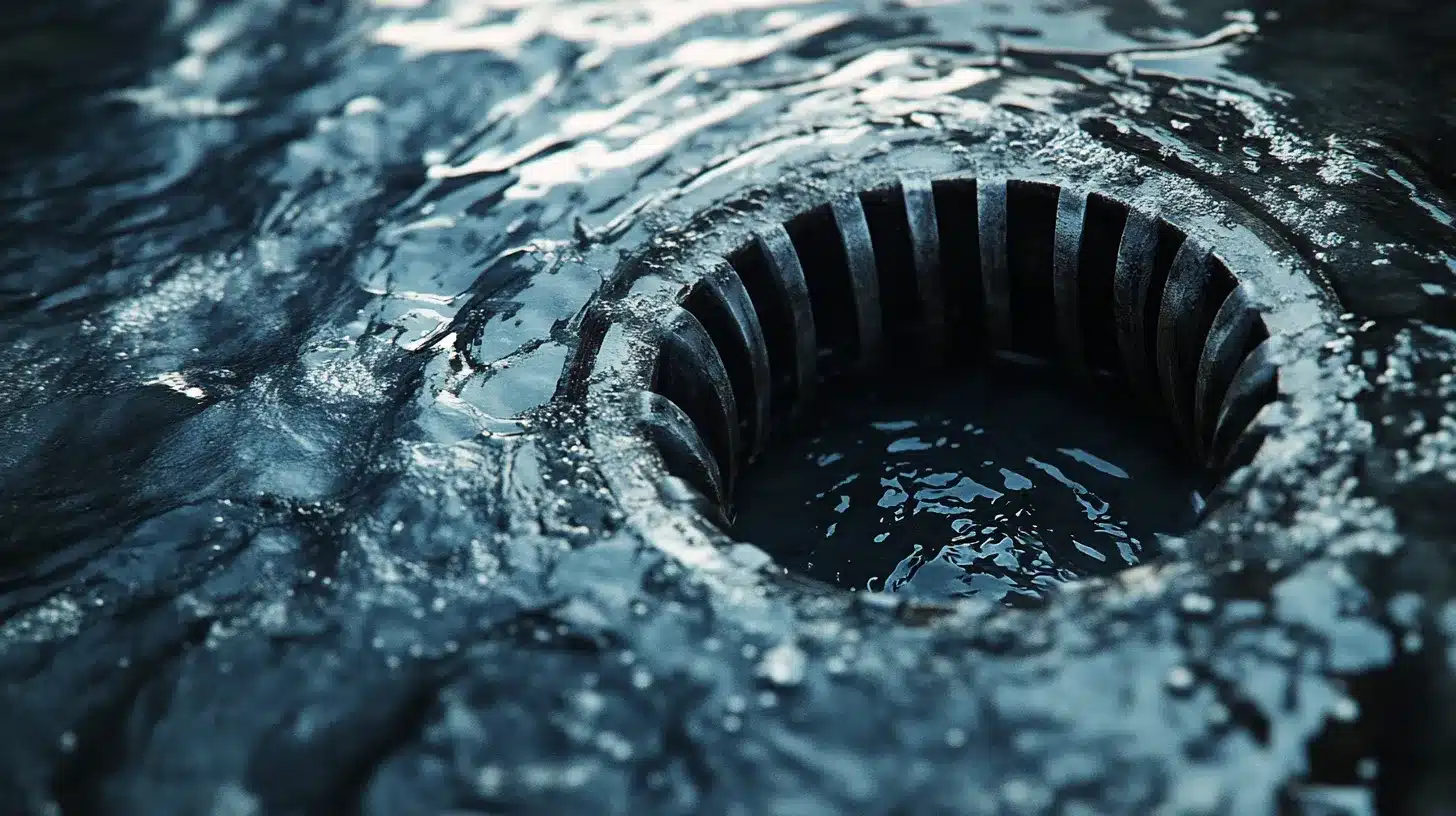
Causes
Excessive water usage
- Multiple households using water simultaneously during peak hours.
- Large-scale events or gatherings put strain on local systems.
Combined sewers
- Systems handling both stormwater and wastewater become overwhelmed.
- Heavy rainfall or snowmelt exceeding system capacity.
Outdated infrastructure
- Aging sewer systems are not designed for current population demands.
- Inadequate pipe sizes for modern water usage patterns.
Solutions
Conserve water
- Encourage responsible water usage, especially during peak hours.
- Install water-efficient appliances and fixtures.
Install sump pumps
- Sump pumps are used to handle excess water and prevent basement flooding.
- Ensure proper maintenance and testing of pumps.
Separate sewer systems
- Advocate for municipal upgrades to separate stormwater and sanitary sewers.
- Support local infrastructure improvement initiatives.
Smart water management
- Use rain barrels or cisterns to collect rainwater and reduce system load.
- Implement greywater systems for non-potable water reuse.
8. Grease and Fat Build-up
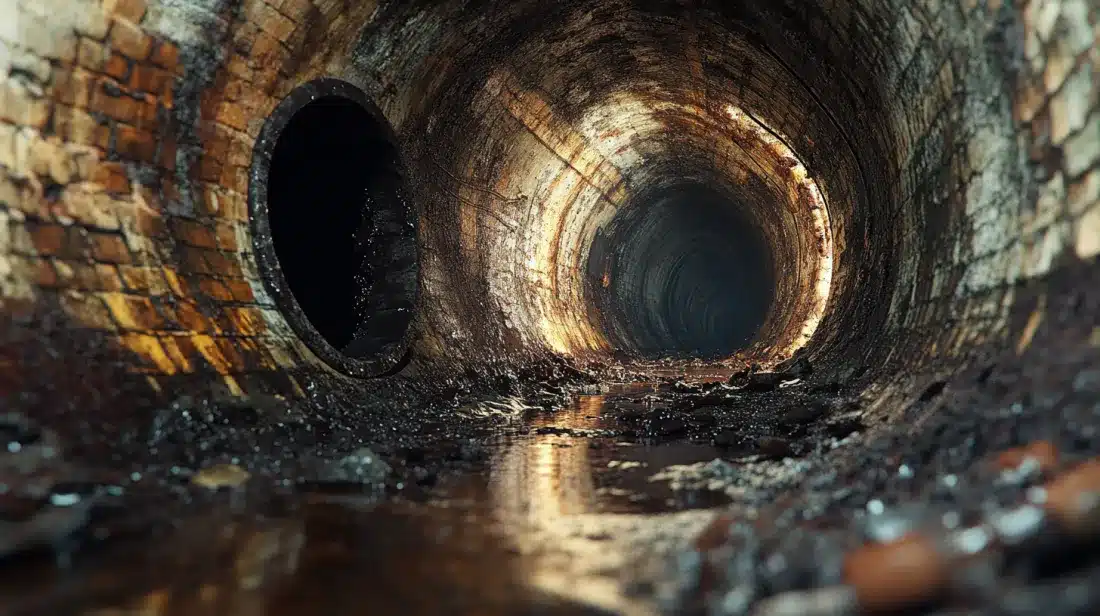
Causes
Improper disposal
- Pouring cooking oils and fats down kitchen drains.
- Washing greasy dishes without scraping excess fat.
Solidification
- Grease and fats cool and solidify in pipes.
- Creates sticky surfaces that trap other debris.
Accumulation over time
- Gradual build-up narrows pipe diameter.
- Combines with other waste to form stubborn blockages.
Solutions
Proper disposal
- Allow grease to cool and solidify, then dispose in the trash.
- Use grease traps or containers for collection.
Avoid pouring fats down drains
- Wipe greasy pans with paper towels before washing.
- Use sink strainers to catch food particles.
Regular maintenance
- Pour hot water down drains weekly to help dissolve minor build-up.
- Use enzyme-based cleaners monthly to break down grease.
Education
- Inform household members about proper grease disposal.
- Post reminders near kitchen sinks.
9. Flushing Non-Degradable Items
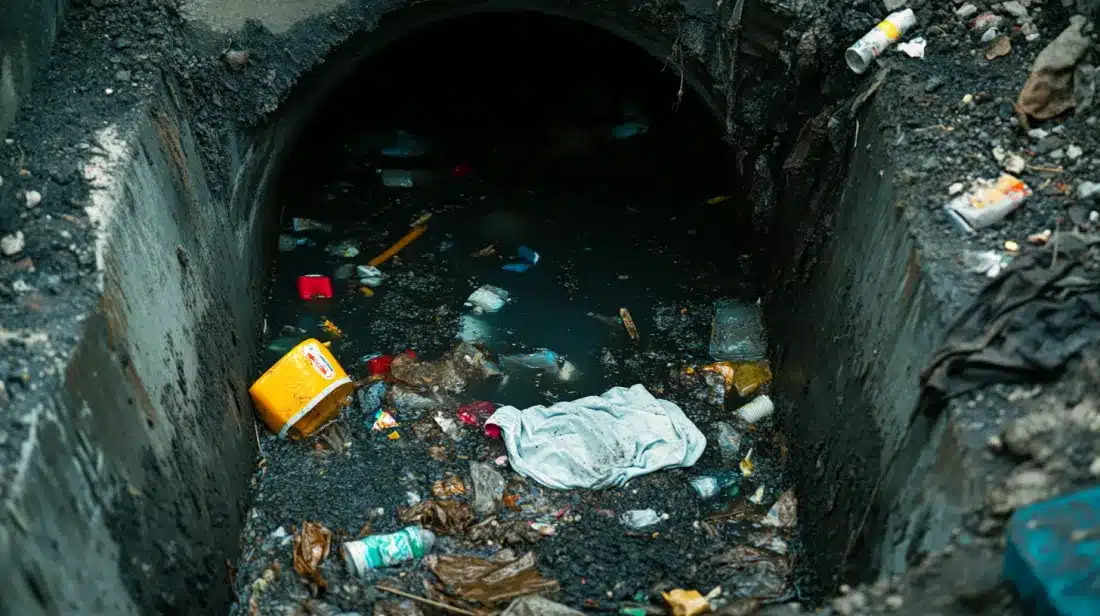
Causes
Improper disposal
- Flushing wipes, even those labeled “flushable”
- Disposing of sanitary products in toilets
- Flushing paper towels or facial tissues
Lack of awareness
- Misconceptions about what can safely be flushed
- Ignoring product disposal instructions
Accumulation over time
- Non-degradable items building up in pipes
- Creating blockages that restrict water flow
Solutions
Proper disposal practices
- Only flush toilet paper and human waste
- Use trash bins for all other items
Education
- Inform household members about proper flushing habits
- Post reminders near toilets
Install drain screens
- Use screens to catch accidentally dropped items
Regular maintenance
- Schedule periodic professional pipe cleaning
10. Improper Disposal of Food Waste
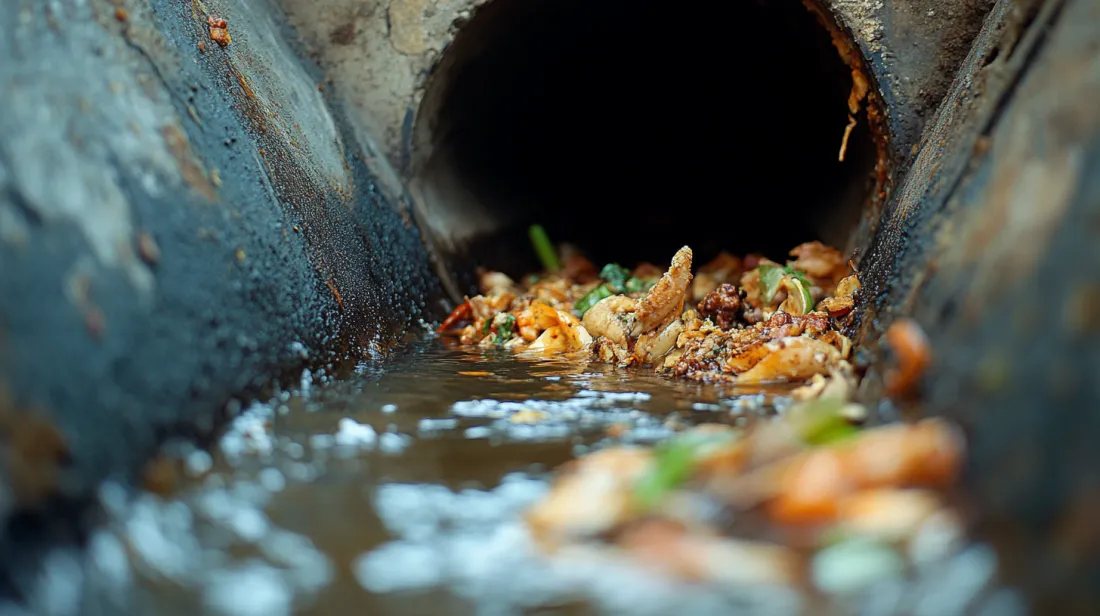
Causes
Accumulation of food particles
- Large food scraps enter drains.
- Grease and oils are solidifying in pipes.
Overuse of garbage disposals
- Grinding excessive amounts of food waste.
- Disposing of fibrous or starchy foods that don’t break down easily.
Improper disposal habits
- Pouring cooking oil or grease down the drain.
- Flushing food scraps down toilets.
Solutions
Use garbage disposals properly
- Run cold water before, during, and after use.
- Grind small amounts of food waste at a time.
Avoid dumping large quantities of food waste
- Scrape plates into the trash or compost before washing.
- Use sink strainers to catch food particles.
Proper grease disposal
- Cool and dispose of cooking oils in the trash.
- Wipe greasy pans with paper towels before washing.
Educate household members
- Teach proper disposal methods for different types of food waste.
- Encourage composting for appropriate food scraps.
Tips to Prevent Sewer Backups
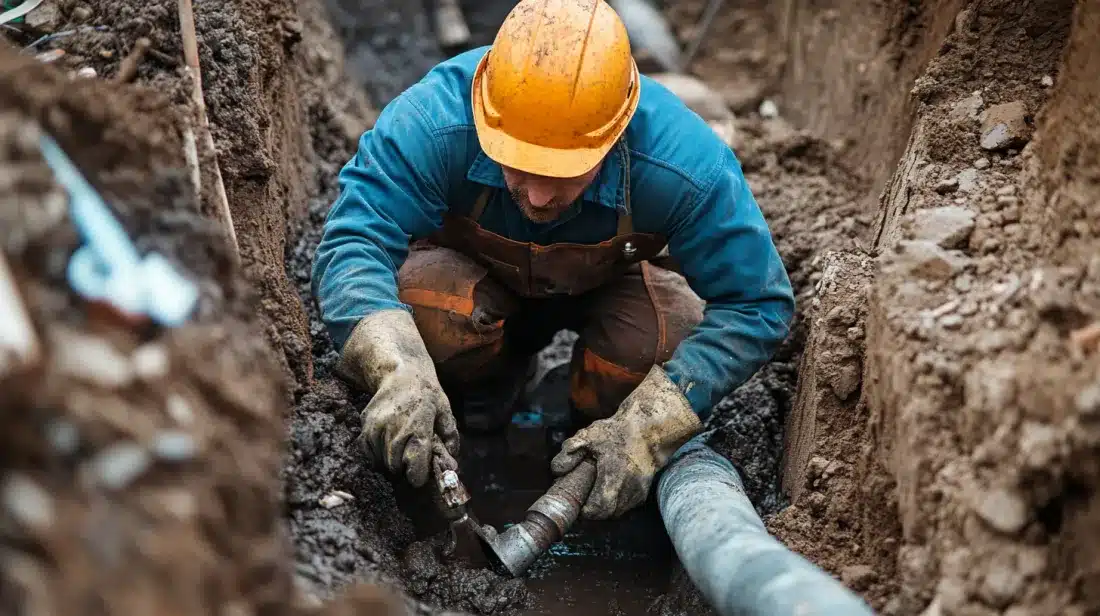
Preventing sewer backups is crucial for maintaining a healthy home and avoiding costly repairs.
Implementing the following preventive measures can significantly reduce the risk of sewer problems and ensure your plumbing system functions smoothly for years.
Regular Inspections
- Schedule annual professional sewer line inspections.
- Video camera technology is used to detect early signs of problems.
- Identify issues like cracks, root intrusions, or blockages before they worsen.
- Keep records of inspections to track changes over time.
Proper Waste Disposal
- Educate household members on proper disposal practices.
- Never flush “flushable” wipes, feminine hygiene products, or cotton swabs.
- Avoid pouring grease, oils, or large food particles down drains.
- Use trash bins in bathrooms for non-flushable items.
- Consider composting food scraps instead of using garbage disposals.
Install Backflow Valves
- Install backflow prevention devices on main sewer lines and basement drains.
- These valves allow sewage to flow out but prevent it from backing up into the home.
- Regularly maintain and test backflow valves to ensure proper function.
- Consider professional installation for optimal performance.
Routine Maintenance
- Clean drains monthly using natural methods like baking soda and vinegar.
- Use enzyme-based cleaners quarterly to break down organic matter in pipes.
- Schedule professional drain cleaning annually to remove built-up debris.
- Maintain outdoor drainage systems, including gutters and downspouts.
- Address minor plumbing issues promptly to prevent larger problems.
By implementing these preventive measures, homeowners can significantly reduce the risk of sewer backups and maintain a healthy plumbing system. Regular attention to these aspects can save time, money, and stress in the long run by avoiding major sewer issues.
What to Do if a Sewer Backup Occurs
Ensure Safety
- Evacuate the area and keep family and pets away.
- Avoid contact with sewage. Isolate the affected zone if possible.
Turn Off Utilities
- Shut off the main electrical breaker, water supply, and gas (if safe).
- Unplug electrical devices in the area.
Ventilate the Space
- Open windows and doors.
- Use fans to reduce odors, but avoid central air systems.
Wear Protective Gear
- Use rubber boots, gloves, eye protection, and a face mask.
- Discard or clean protective gear after use.
Call Professionals
- Contact a plumber and sewage cleanup service.
- Notify local authorities if it’s a municipal issue.
Notify Insurance
- Contact your insurer.
- Document the damage with photos and receipts for repairs.
Remember, sewer backups pose serious health risks.
While these steps can mitigate immediate dangers, professional intervention is crucial for thorough remediation and preventing future occurrences.
Conclusion
Sewer backups can turn your home into a nightmare, but armed with knowledge, you can prevent most issues.
From clogged pipes to tree root invasions, understanding these problems empowers you to take action.
Regular inspections, proper waste disposal, and routine maintenance are your best defenses.
Remember, it’s not just about avoiding inconvenience – it’s about protecting your family’s health and your property’s value.
Don’t forget to document everything for insurance purposes.
By implementing the strategies we’ve discussed, you’ll significantly reduce your risk of sewer backups.
Ready to take the next step? Schedule a professional inspection of your sewer system today.




